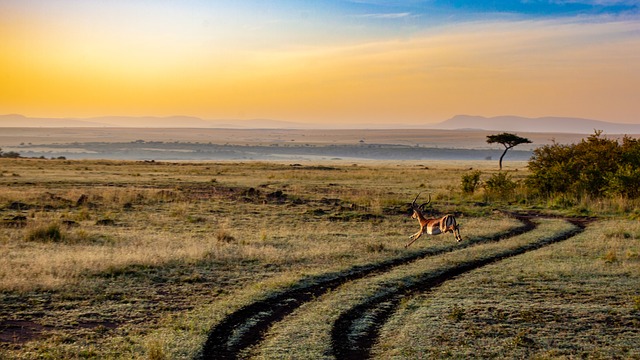Rule No. 1 for anyone embarking on an African walking safari is this: When confronted by a wild animal — like, say, a lion — don’t run. The thinking is that if you act like prey, you will be treated as such.
Which, of course, is easy to do in theory, but harder in practice. A blogger named Richard Madden related just how hard in a post, when he discussed how a lion charged his party during one such safari, in Zambia.
The beast came to a screeching halt before reaching the group (and let’s remember that there was a guide on hand, and that he was armed — as is always the case with organized walking safaris). Still, Madden writes that he and his cohorts “toasted (their) mutual survival” before turning in that night, after being reassured by their guide that such close encounters are rare.
The bottom line? These excursions are unlike any other in that you are not protected by a vehicle. That makes these safaris exciting and exhilarating. But you are also on the animals’ turf. They demand your attention and respect. That should always be remembered.
And Madden writes that the payoff is incredible, that the things you see, hear and feel — that you come to understand — are beyond measure. That was true of his time in Zambia, and it’s true of walking safaris in South Africa as well.
Here are the best of those in the latter nation:
Kruger National Park — Sanparks, South Africa’s National Park Authority, offers seven three-day safaris through the park, which sits in the nation’s northeastern corner and at over 7,500 square miles is one of Africa’s largest game reserves. The park features 14 different ecosystems and the widest variety of animal species of any park on the continent.
The Imfolozi (or Umfolozi) Wilderness — Located within Hluhluwe-Imfolozi Park, South Africa’s oldest game park, there are no roads, just animal trails — not to mention plenty of rhinos. One site estimated there are 1,600 white and 450 black, many of which can be seen during four-night safaris run by KZN Wildlife.
Sanbona Wildlife Reserve — Located three hours north of Cape Town, Sanbona is known for the scenic vistas — for, specifically, the Warmwaterberg Mountains, all manner of flora and fauna and the rock art of the San People, who once inhabited the area. All of this can be experienced at what are known as “explorer camps.”








